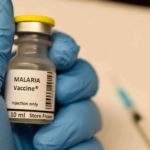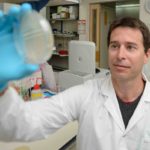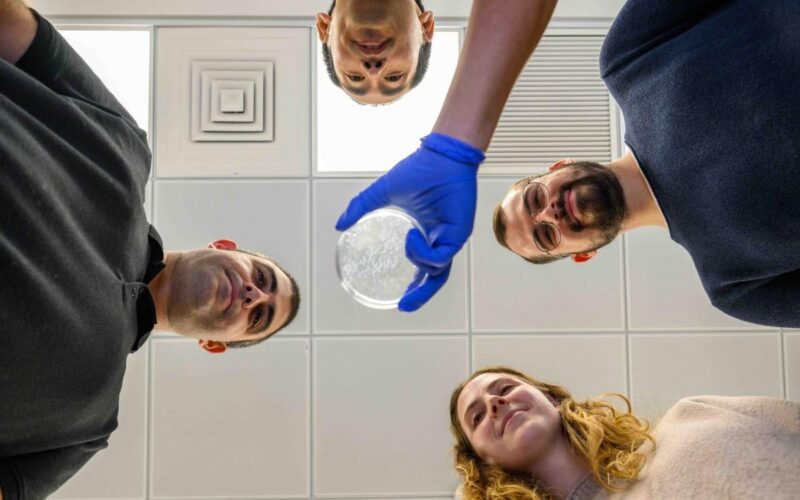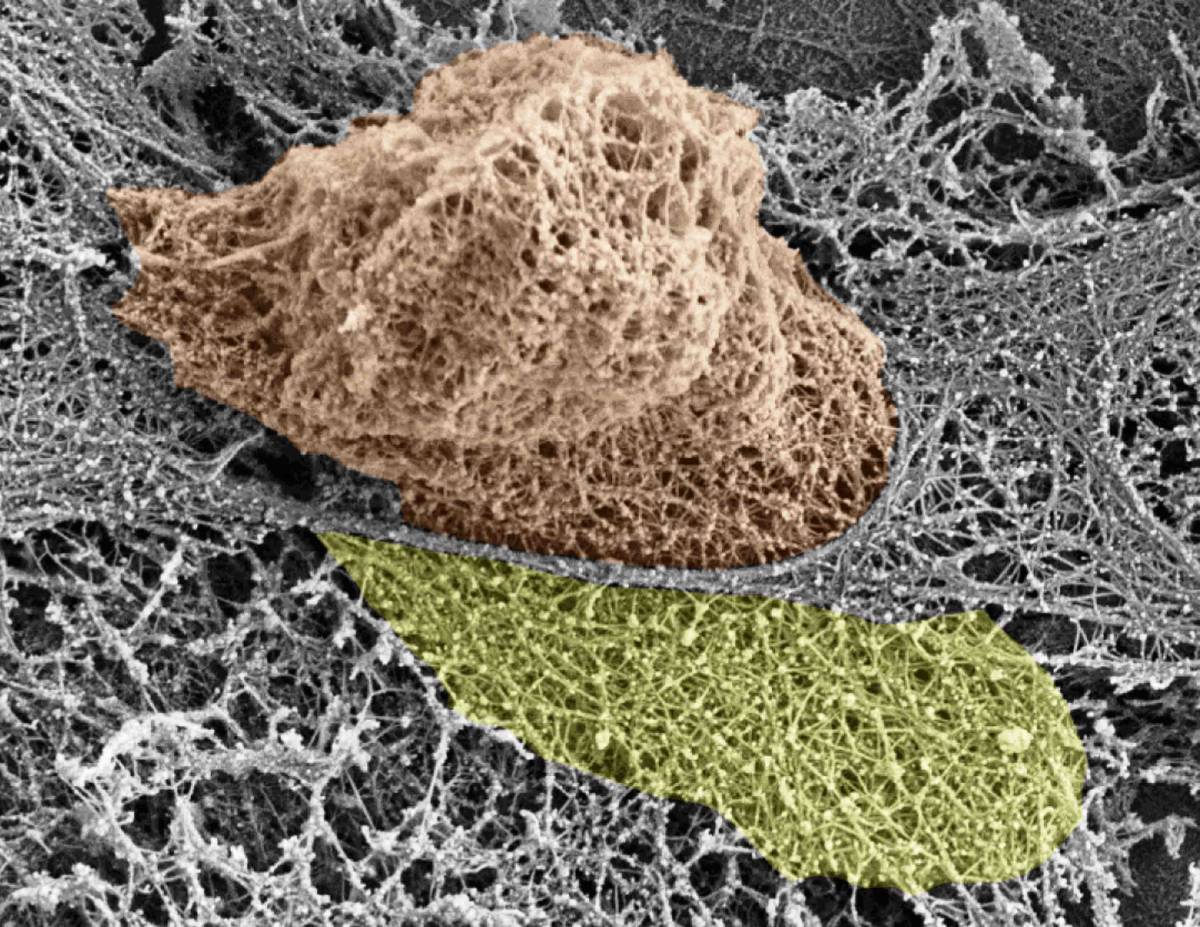
January 27, 2017
One of the living body’s mysteries is the movement of cells – not just in the blood, but through cellular and other barriers.
New research in the Weizmann Institute of Science now sheds light on the subject, especially on the movement of immune cells – white blood cells – that race to sites of infection and inflammation to help. The study revealed they actively open large gaps in the internal lining of blood vessels so they can exit through the vessel walls and rapidly get to infected areas.
Professor Ronen Alon and his group in the Weizmann Institute’s Immunology Department discovered how various white blood cells push their way through the lining of the blood vessels when they reach their particular ‘exit ramps’. Using their nuclei to exert force, they insert themselves between – as well as into – the cells in the vessel walls called endothelial cells. Dismantling structural filaments within the cytoskeletons – the internal skeletons – of the endothelial cells creates the large holes – several microns in diameter.
According to Professor Alon the nucleus is the largest, most rigid structure in the cell.
“When driven by motors specifically engaged for this function, is tough enough to push through the barrier imposed by the blood vessel walls,” he said.
The scientists tracked the cytoskeletons of endothelial cells as they were crossed by immune cells in real time; the behaviour of the nuclei of various white blood cells during active squeezing; and the fate of the various types of actin fibers that make up the endothelial cell skeletons.
They used a number of methods for the tracking, including fluorescence and electron microscopy, in collaboration with Dr Eugenia Klein of the Microscopy Unit; a unique system in Alon’s lab for simulating blood vessels in a test tube; and in vivo imaging with Professor Sussan Nourshargh of Queen Mary University of London.
The results of this research, conducted in Alon’s lab by research students Sagi Barzilai and Francesco Roncato and postdoctoral fellow Dr Sandeep Kumar Yadav, were recently reported in Cell Reports.
Common wisdom in this field had held that the endothelial cells must help immune cells squeeze through by contracting themselves like small muscles, but the present study found no evidence for such contraction-based help.
“Immune cells play a critical role in getting their own bodies across the barrier presented by blood vessel walls. Our study shows that the endothelial cells, which were thought to be dynamic assistants in this process of crossing of blood vessel walls, are really more responders to the ‘physical work’ invested by the white blood cell motors and nuclei in generating gaps and crossing through blood vessels,” said Professor Alon.
Significance for cancer research
In addition to increasing the basic understanding of how the various arms of the immune system reach their sites of differentiation and activity, these findings may aid in cancer research.
“We believe that small subsets of metastatic tumor cells have the ability to adopt the mechanisms used by immune cells to exit the blood vessels into the lungs, the bone marrow, the brain and other organs. If this is true, we might be able to identify these subsets and target them before these cells leave their original tumor sites and invade distant organs,” Professor Alon concluded.
Professor Ronen Alon’s research is supported by the Herbert L. Janowsky Lung Cancer Research Fund; Mr and Mrs William Glied, Canada; and Carol A. Milett, Aventura, FL. Professor Alon is the incumbent of the Linda Jacobs Professorial Chair in Immune and Stem Cell Research.
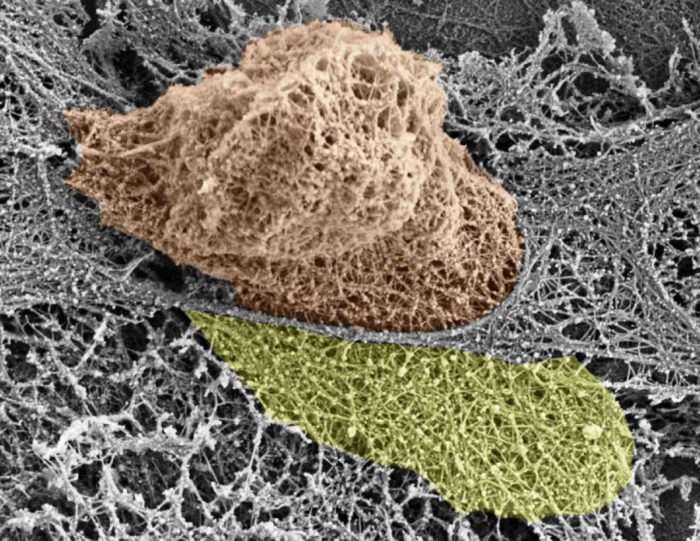
White blood cell squeezing through endothelial cells (grey) on its way out of the blood vessel walls. The actin cytoskeleton of both cells is exposed; the white blood cell nucleus is shown in brown and the large actin rich extension that dismantles the endothelial actin is shown in yellow

